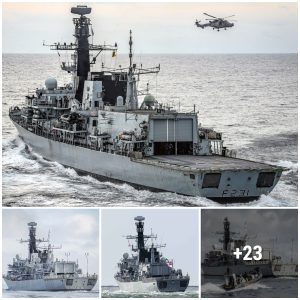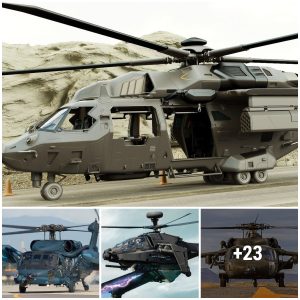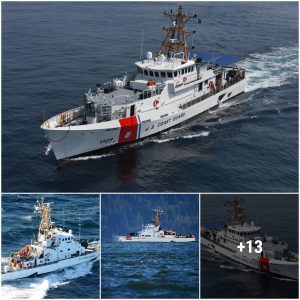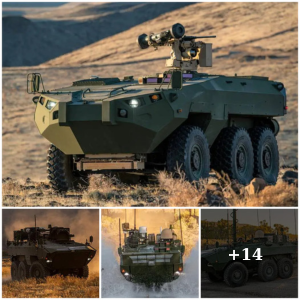In the 1950s Britain developed this highly unique vehicle, the TV1000 Rhino. It had six enormous wheels, a powerful V8 engine and could neutral turn like a tank. In its day it was touted as “the most powerful wheeled vehicle on Earth”.
There is little information on this 20 ton beast, despite it having a wild and varied career.
The Rhino was essentially a test rig, designed to help researchers investigate the performance differences between wheeled and tracked vehicles. It was never intended for mass production.
Fortunately, it survived its career and can still be seen today.
Development
The Rhino’s story starts in the 1950s, when Britain’s Fighting Vehicle Research and Development Establishment (FVRDE) were highly interested in the possibility of using wheeled vehicles in combat.
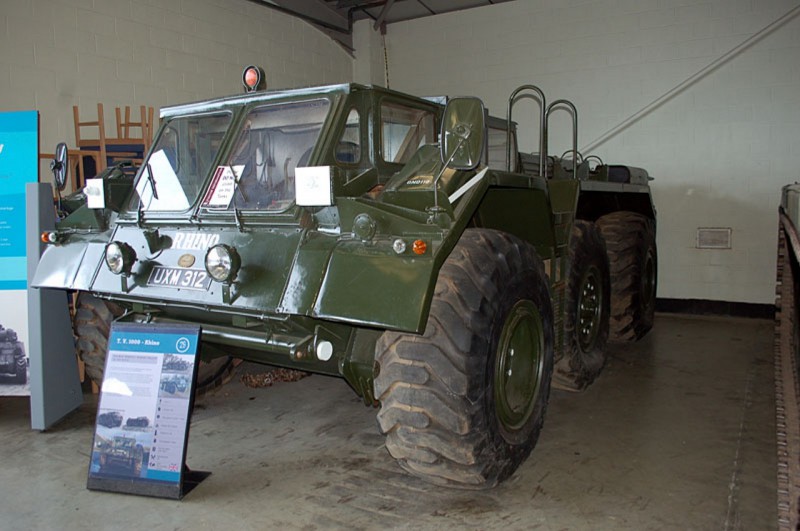
Wheeled combat vehicles were not a new concept, but the FVRDE weren’t thinking of humble scout cars or troop transports. They were looking at using wheeled vehicles in the same role as tracked machines.
At this point Britain had no existing vehicles suitable for evaluating this concept, so they had to create one – the Rhino.
Work started in 1957.
Early in the project engineers settled on six wheels. This particular amount was chosen because they believed eight would add too much weight without much gain in mobility, while four would not be enough to get it across rough terrain.
The TV100 Rhino
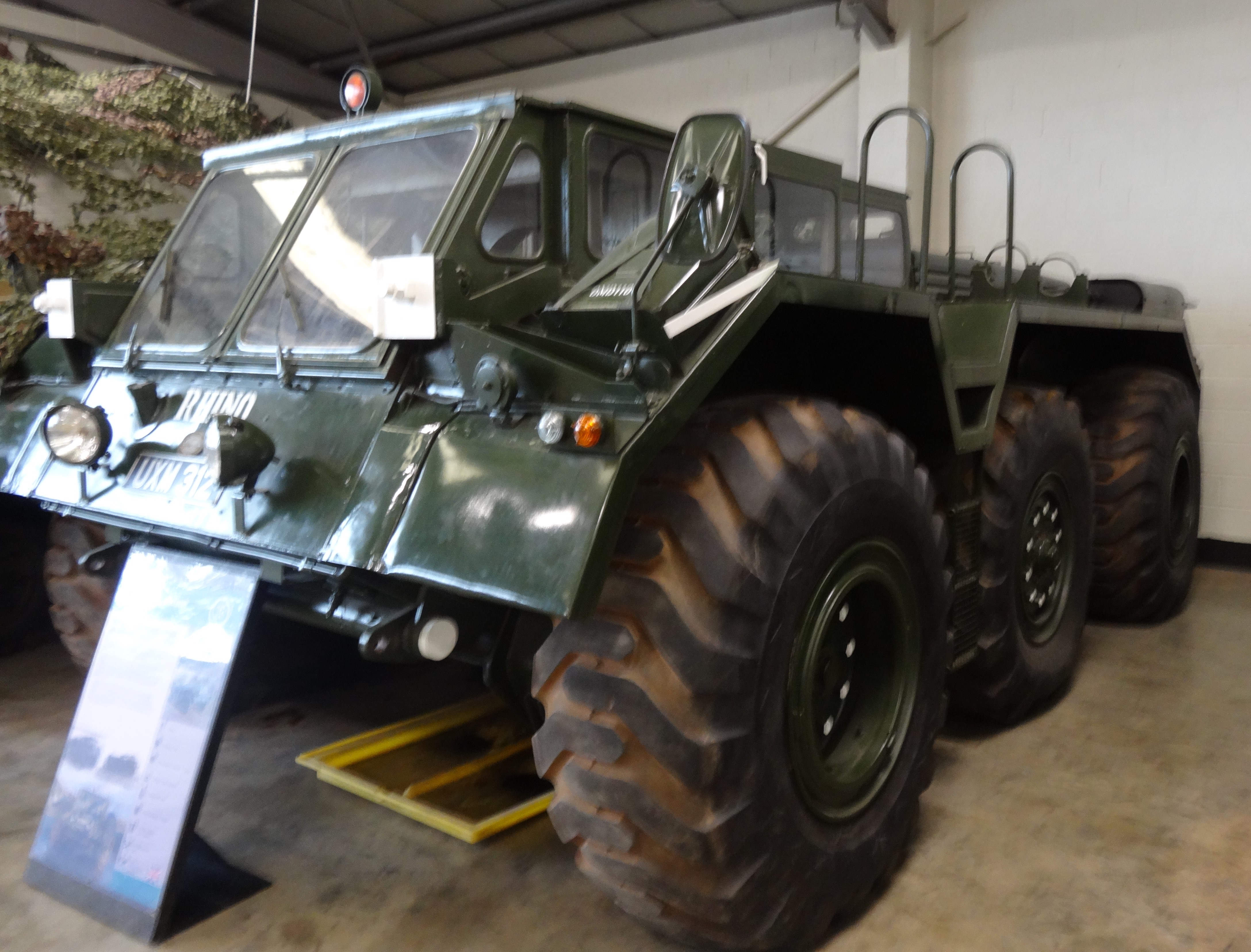
One of the most unique aspects of the Rhino is its steering system. Unlike most other wheeled vehicles, the Rhino employs skid steering. This effectively allows it to move like a tank, by having the left and right sets of wheels turn independently of each other.
This was a strange choice at the time, but one based on practicality and not performance. It could have been fitted with a more conventional steering system, but its enormous width would have been even greater had it not been a skid steer.
With this type of system it functions in much the same way as a tank – just without tracks. Because of these similarities the Rhino’s designers opted to use a tank transmission, one from an A34 Comet.
This was a WWII-era Merritt-Brown gearbox that had five forward gears and one reverse gear. Later on the Rhino was fitted with a similar gearbox from a Conqueror after a gearbox failure.
Not only did it use the same gearbox as the Comet, it also used Christie suspension, although in a different configuration to the WWII tank.

As each of the Rhino’s wheels were powered, its suspension system was much more complex than that used on the Comet, on which only the drive sprocket was powered.
The Rhino’s Christie suspension springs were contained within oil-filled chambers and controlled by shock absorbers. At the bottom of each unit was a wheel hub, with power delivered via a series of chains and sprockets.
An indication into its test-rig nature, the Rhino’s crew compartment was divided into two parts; one for the crew operating the vehicle and one for instruments.
In the rear was a unique engine suitable for such a unique vehicle: a Rover Meteorite V8. This 18 litre (1,099 cu in) engine was derived from the 12 cylinder Meteor, which itself was a modified version of the Rolls-Royce Meteor aircraft engine.
It saw relatively little use compared to its larger siblings, with its most notable use in the enormous Thornycroft Antar tank transporter.
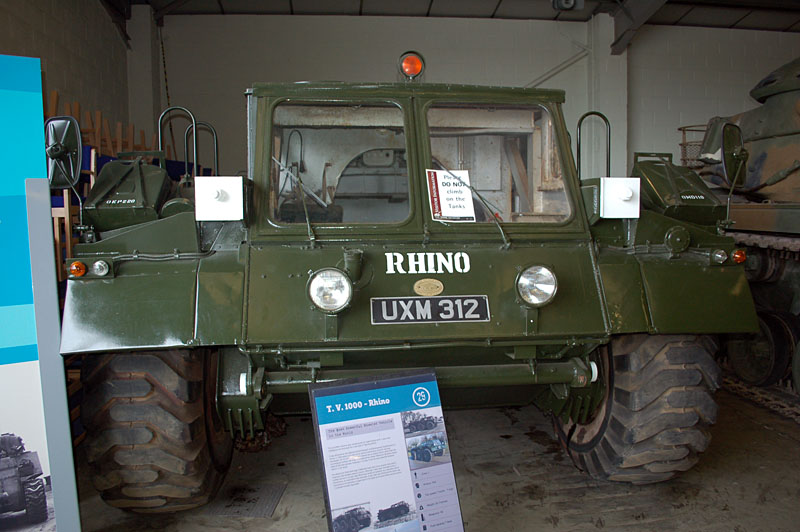
The Rhino used the 202B version, which had fuel injection and produced 535 hp. This power came at a cost though, as it had a rather hefty rate of fuel consumption at 2.3 miles per gallon.
The Rhino is often said to have been the most powerful wheeled vehicle on the planet. While it was certainly powerful, in reality this was far from the truth. For example, land speed record machines had been pushing 1,000 hp since the 1920s.
In addition to its Meteorite engine, the Rhino also had an auxiliary generator to power other functions.
All of this culminated in an exceptionally large vehicle; 126 inches wide and weighing more than 20 tons. This was over 20 inches wider than a Sherman tank and only 14 inches thinner than a Tiger I.
It was completed in 1959 – minus its cab.
Performance

Soon after its completion the Rhino began early trials, where its skid-steer system was found to have impressive performance.
In normal conditions it rivalled the abilities of a tank, even being able to neutral turn on the spot by rotating each sides’ wheels in opposite directions. This steering was also accurate and easy to operate – especially compared to tanks.
The Rhino received its finishing touches in the summer of 1959.
Soon after this it was taken on a 100 mile cruise between Chertsey and Stockbridge, through a number of tight towns and villages – likely causing quite a stir amongst the locals.
In further tests the Rhino was found to have a top speed of 40 mph. However, due to its skid-steer system it had a tendency to eat its way through tyres at a rapid pace.
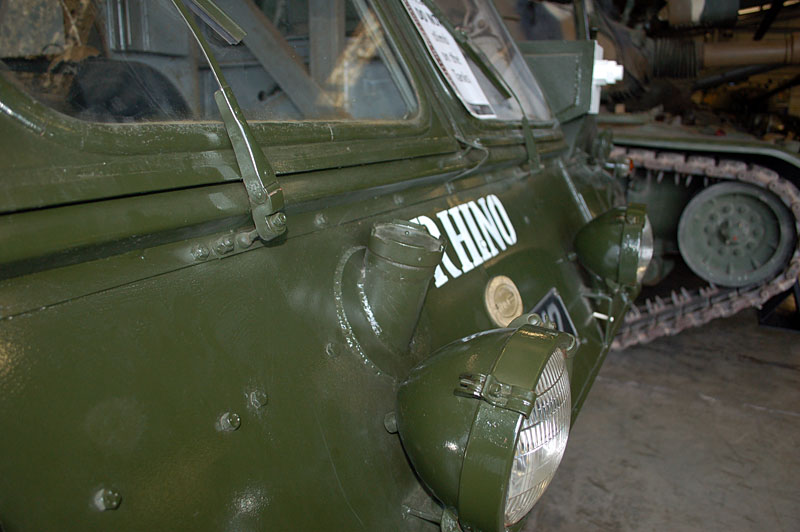
In 1960 it was taken for a 400 mile blast up to Kirkcudbright, Scotland.
Reportedly it averaged 36 mph and “no difficulty was experienced in overtaking slower vehicles”.
The comical image of being overtaken by a 20-ton six wheeled experimental vehicle aside, it made the trip with little fuss.
Still, military machines such as the Rhino are not designed to cruise up and down motorways; its off-road performance was key.
Here it seemed to have done well too, at least in comparison to other similar vehicles. It was put through its paces around a course at Aldershot, where it comfortably rivalled the performance of an FV432 and a Centurion.
In another test the Rhino outperformed a Comet by such a large margin that the Comet threw a track while attempting to keep up with it.
Eventually it was moved further south to Bovington, competing against a number of vehicles at the Lulworth ranges.
Interestingly, one of the vehicles it faced was a WWII German Sd.Kfz 234/3 8×8 armored car. This was captured by the British at the end of WWII. From here it was used as a benchmark of performance for other vehicles. It now resides in The Tank Museum.

In extremely boggy conditions the Rhino quickly became stuck, as did the other vehicles.
Later on the Rhino became involved with Project Prodigal, a British attempt to create a lightweight, air-portable tank destroyer. The FV4401 (often called Contentious) was a result of this project and also used components from the Comet.
The Rhino was evaluated to see if it could achieve the goals of Project Prodigal. During these tests it was fitted with a primitive sighting system and tasked with aiming an imaginary gun on the move.
Unsurprisingly it did not do well.
At some unknown point the Rhino was retired and handed over to The Tank Museum, where it is today.
